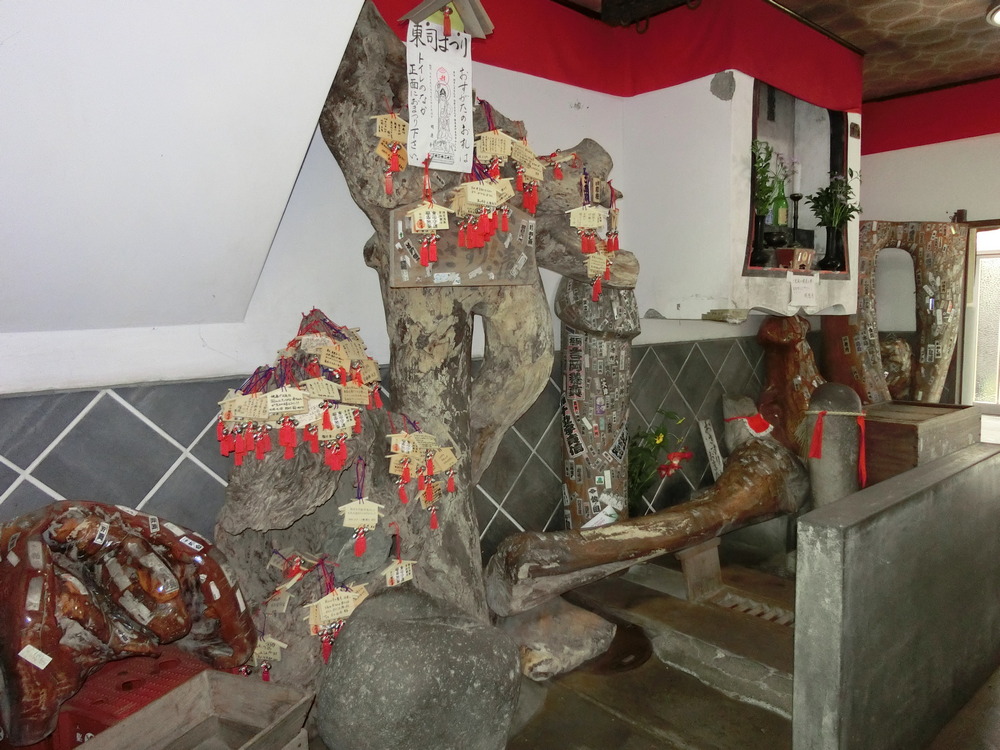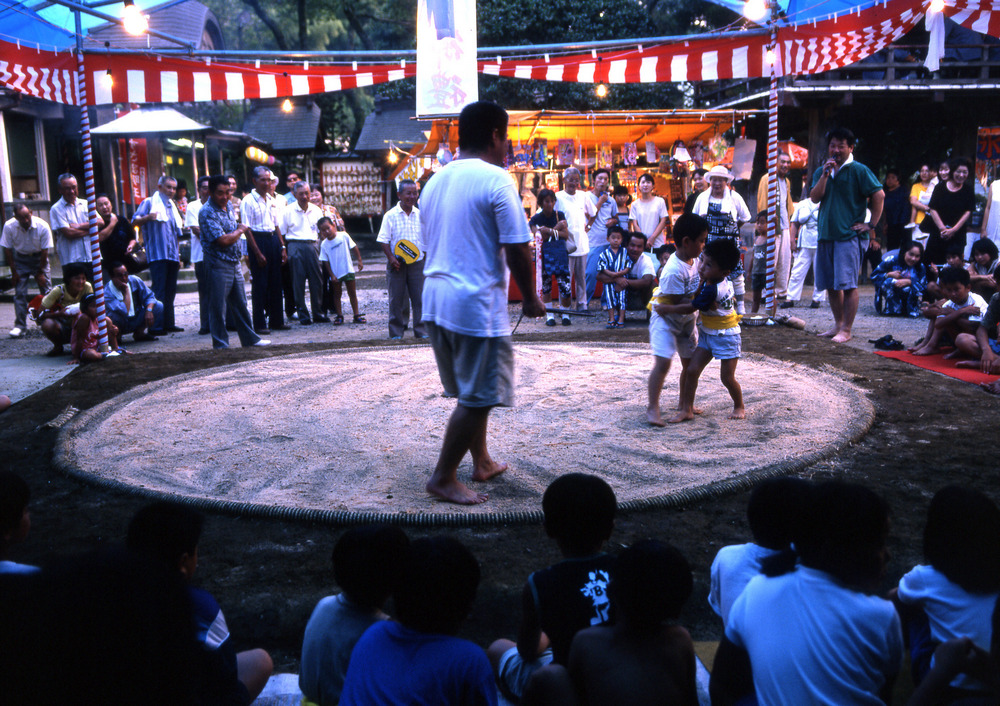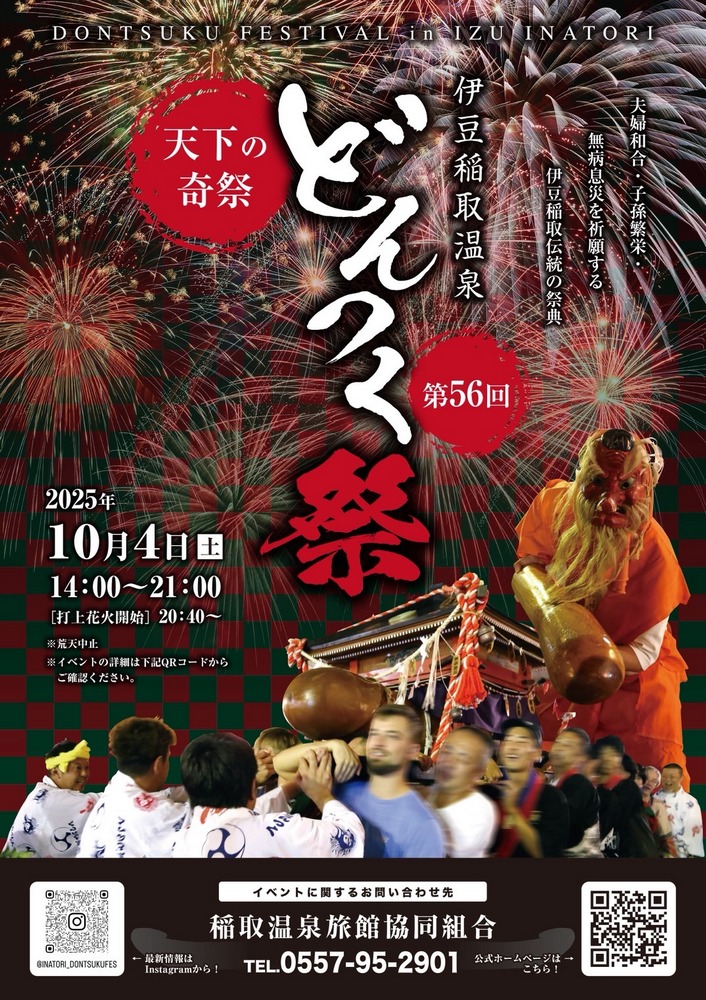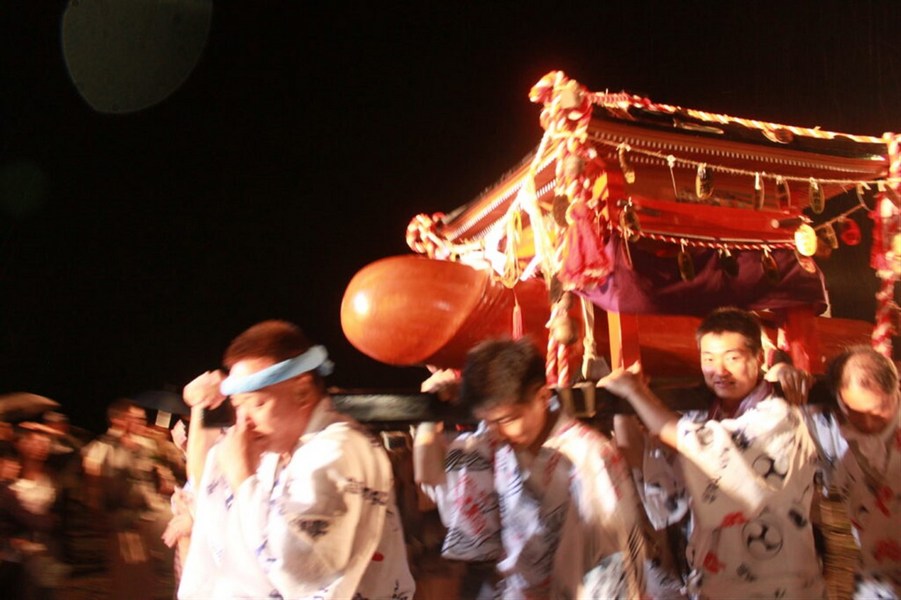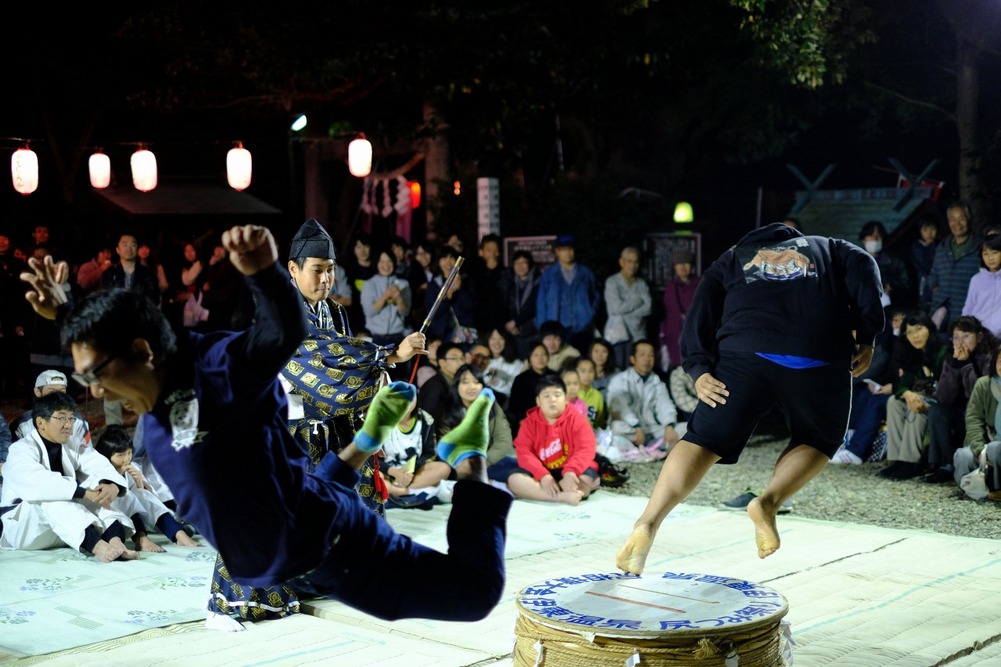The Izu Peninsula has many festivals, and many take place in the summer and fall. Three festivals are among the most unusual in all of Japan.
Yugashima's Toshi Festival
湯ケ島の東司祭り
August 29
Meitokuji Temple in Yugashima, Izu City, is known as the “Temple of the Toilet God.” It’s a Zen (Soto sect) temple built during the Meitoku era (1390-94) by Zen Master Rizan Tadamasu. It’s easy to mock the idea of a toilet god, until you carefully consider the importance of the toilet and the activities that take place there.
In the lore of Japanese esoteric Buddhism, there are five great myoo (dieties) who are able to purify impure things. One of these is Ususama Myoo, a god of fire and, well . . . shit. He is also the guardian deity of toshi (toilets). “Ususama Myoo,” is enshrined at Meitokuji Temple, and people come from all over the country to request his blessings.
The method of worship at Meitokuji Temple involves stepping over a toilet while praying not to get sick from things like digestive/intestinal problems and bed wetting among children. Believers also pass by the Omatagi and Osasuri (representations of male and female genetalia) while praying to be free from sexually transmitted diseases and other reproductive issues.
Not exactly casual topics of conversation for many, but people plagued by such problems understand the necessity of a god like Usasama.
The festival is held every year on August 29, and is quite festive. Fireworks, sumo and a celebratory summer atmosphere help us normalize this unusual festival.
Inatori's . Dontsuku Festival
稲取のどんつく祭り
September 30
Let’s just get right to the point here. There is nothing quite as unique as a festival with a giant penis as its focal point, and Inatori’s Dontsuku Festival does not disappoint.
The Dontsuku Festival allegedly originated during Japan’s Yayoi Era, about 2,000 years ago. This makes it one of Izu’s oldest festivals as well.
Unlike many genetalia festivals around the world that orginated from fertility and planting rituals, the Dontsuku Festival is dedicated to marital harmony. The story goes that way back when, a young man would carry a large wooden phallus around to the homes in the village and poke people with it. This was supposed to keep couples from fighting and probably promote fertility in some cases. I imagine they were more open minded about these things back then and couples had a good laugh, which is always good for a marriage.
This year’s Dontsuku Festival is on October 4, with events beginning at 2:00 pm.
Ito's Shiritsumi Festival
伊東の尻つみ祭り
November 10
One of the many reasons the Izu Peninsula is an important place in Japanese history because of its role in the formation of the Shogun era (1185-1333). Minamoto Yoritomo (pictured below), Japan’s first Shogun, was exiled here at the age of 14. He spent a lot of time plotting vengeance and his family’s return to power. Being a healthy young man, his passion also turned to the beauty of a young woman named Yaehime, the daughter of his enemy, Sukechika Ito.
Forbidden love between the two led to one of Izu’s most unusual festivals – the Shiritsumi Matsuri, literally “Butt Pinching Festival.” Legend has it that when the two lovers wanted to arrange a meeting, they would express their desire by passing around sacred sake during a ritual in pure darkness at a local shrine. As the sake was passed from one person to the next, they would pinch the next person’s behind to signal that the lovers wanted to meet.
Over the years, the butt pinching name remained, but the event turned into a kind of butt bumping sumo match. On November 10 each year, participants meet at Otonashi Jinja, the same shrine where the lovers met, and compete to see who can knock challengers off a small, round platform … with their behinds. It is an event much loved here in Ito, and I’m sure it’s a lot more fun than butt pinching in the dark.


